Making concrete requires sand — and lots of it. That’s why some engineers are looking at substituting recycled glass, a more sustainable ingredient, in building materials.
The start of 2021 ushered in an export ban on unprocessed waste glass. In July it will be followed by a ban on plastics, on tyres in December, and then paper in 2024.
The phased-in restrictions were spurred by an effective ban by China in 2018 on waste imports. Other regional neighbours also shut their borders to recyclable materials, and Australia now needs to find a home for them, be that in the landfill or — preferably — in new products.
Another trend necessitating more sustainable development is the depletion of sand. The issue is not desert sand — which has grains too smooth to be used in construction — but the sort found in riverbeds and lakes.
Concrete is mostly made up of aggregates, such as sand and gravel, which constitute 65 to 80 per cent of the mix. About 50 billion tonnes of aggregate is used annually, a figure that is rising with increased urbanisation. Experts estimate that riverbed sand is being extracted at twice the rate it can be formed naturally.

“The prediction provided by the industry is that there will be a shortage of sand in the medium term,” Engineers Australia Fellow Dr Riyadh Al-Ameri FIEAust CPEng told create.
Al-Ameri, a Chartered engineer and Senior Lecturer in Civil Engineering at Deakin University, is working to tackle two problems at once: shrinking natural resources and growing mountains of waste. He said that recycling rates during the 2016-17 financial year of only 12 per cent of Australian plastics and 57 per cent of glass, for volumes of 2.5 Mt and 1.1 Mt respectively, represent a very large-scale resource available to the country.
“At the same time, this has been accompanied by an expected or predicted shortage of material resources, especially for concrete,” Al-Ameri said, adding that Australia produced about 30 million m3 of concrete in 2017.
“If you’re able to find a [way that] glass can replace sand in this mixture, that would be, of course, a great gain. There is enormous potential here to assist the industry and use the huge pile of glass available.”
Alternatives needed
Nearly everything used in civil engineering is made from a virgin resource material, said Engineers Australia Fellow Daniel Bosco FIEAust, founder and Director of Bluey Technologies, a supplier of construction products and expertise. In March, the company was acquired by construction chemicals supplier MBCC Group.
“Pulling virgin sand out of deposits around Sydney is not a long-term, sustainable solution and really not the best way for our industry to be heading. We have to find alternatives,” Bosco told create.
“Places like Maroota and Mittagong and Kurnell and Anna Bay — all these places are being mined for virgin stock sand into concrete.”
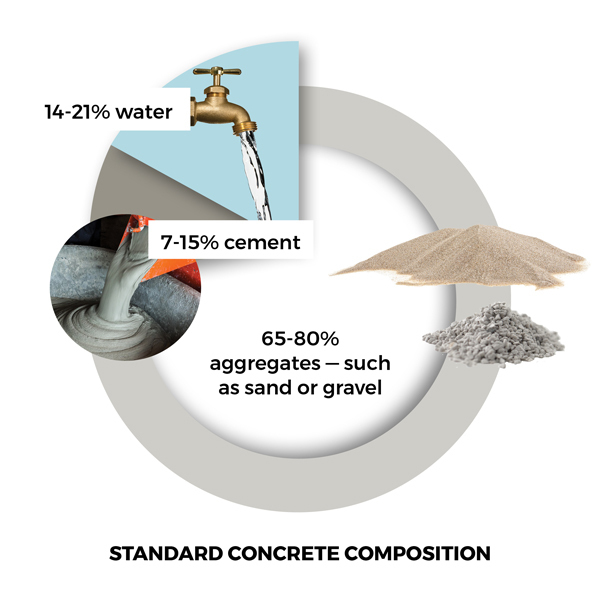
Bosco’s company was a winner at the Australian Financial Review’s 2020 Most Innovative Companies awards, recognition it earned thanks to its shotcrete product, which uses 60 per cent recycled material, including kerbside glass. Such glass makes up 30 per cent of the contents of a standard yellow recycling bin.
This is essentially sand if you crush it, points out Chartered engineer Rabin Tuladhar FIEAust CPEng, Associate Professor at James Cook University.
Using glass as a component of concrete “has been done in many places, many universities, for quite a long time, but what we are looking at is industrial scale, not just at the lab scale”, Tuladhar said.
“Working with partners — industry partners like materials recovery facilities and the councils — and also concrete companies to make sure that this can be translated into the real world.”
Against the grain
Tuladhar has been investigating using recycled plastic in concrete products since 2012 and recycled glass since 2016. The former, using recycled polypropylene to reinforce concrete, won an Australian Innovation Challenge Award in 2015, and has been brought into industry by Fibercon.
“Bottles to concrete” work is moving out of the laboratory as well. Highlighting the potential is a concrete footpath in Cairns built by Cairns Regional Council, which has been in use for more than a year. It used the standard Queensland Transport and Main Roads concrete mix, but with 40 per cent of the natural sand replaced with crushed glass. This represents 8 t of bottles.
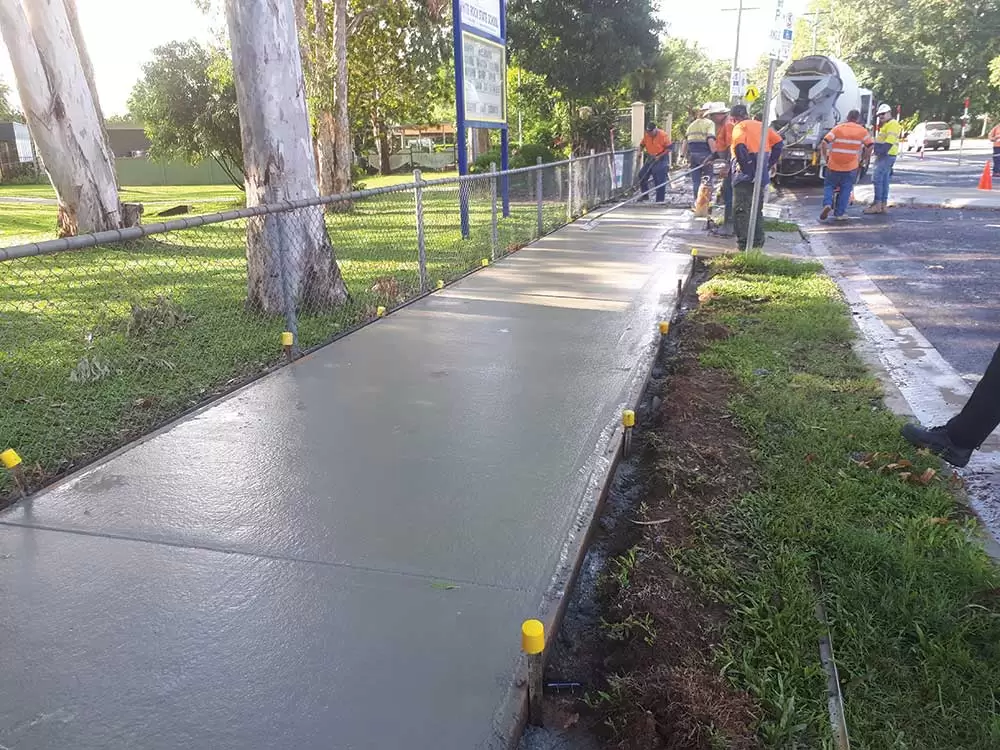
Glass in concrete is a decades-old idea, though practical applications are made difficult by what’s known as the alkali-silica reaction (ASR). Caused by alkali in cement and silica in glass, this reaction produces an expansive “hygroscopic” gel, which takes in moisture, swells, and can crack the aggregate and concrete.
This tends to happen when the glass particles are bigger, Tuladhar said. Particle sizes can influence how reactive a mix is and controlling them is one method pursued to mitigate the ASR cracking in concrete.
“The major problem with waste glass is that currently most standards in Australia and some other countries don’t specifically allow the use of glass in some grades of concrete, and the main reason is because of some of the harmful reactions that can happen in the long term,” said Dr Ali Kashani, Churchill Fellow in Sustainable Construction Automation and 3D Printing at the University of New South Wales.
Kashani and Dr Taehwan Kim, a Lecturer at UNSW’s School of Civil and Environmental Engineering, are part of an industry project with concrete supplier XL Precast. This work, led by UNSW Professor Stephen Foster, aims to substitute up to 15 per cent of cement with glass powder and 40 per cent of sand with glass fines in green concrete.
Besides any technical challenges, Tuladhar said an important factor is bringing all the necessary stakeholders together — including researchers, concrete companies and councils.
There’s also the demand side.
“Concrete companies’ hurdle is that they have to put in a whole new silo for crushed glass,” he said. “They will do it, of course. But the customer should be willing to use the concrete with recycled glass.”
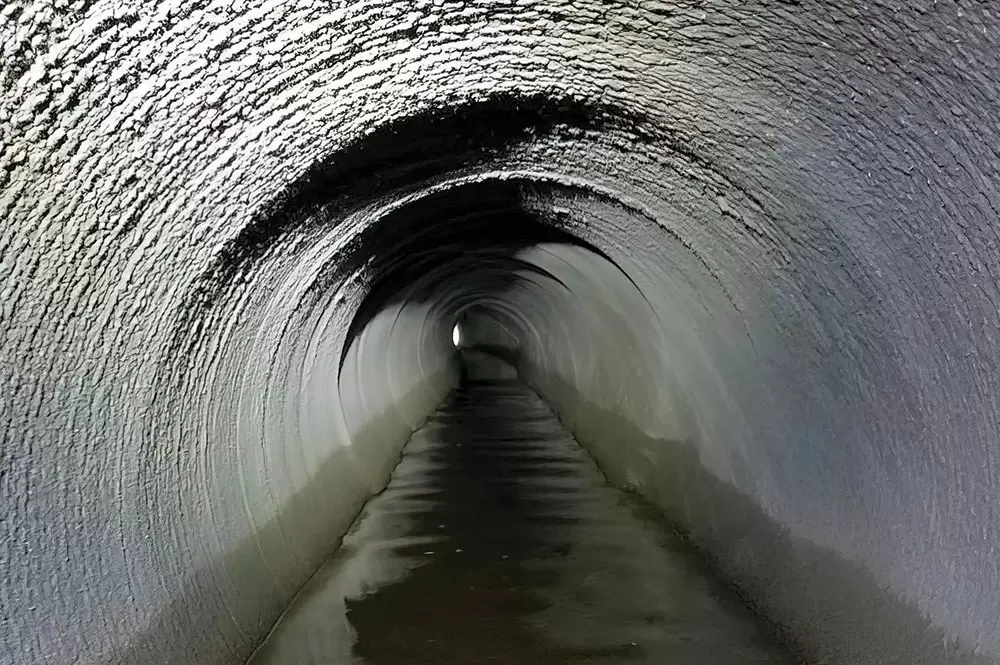
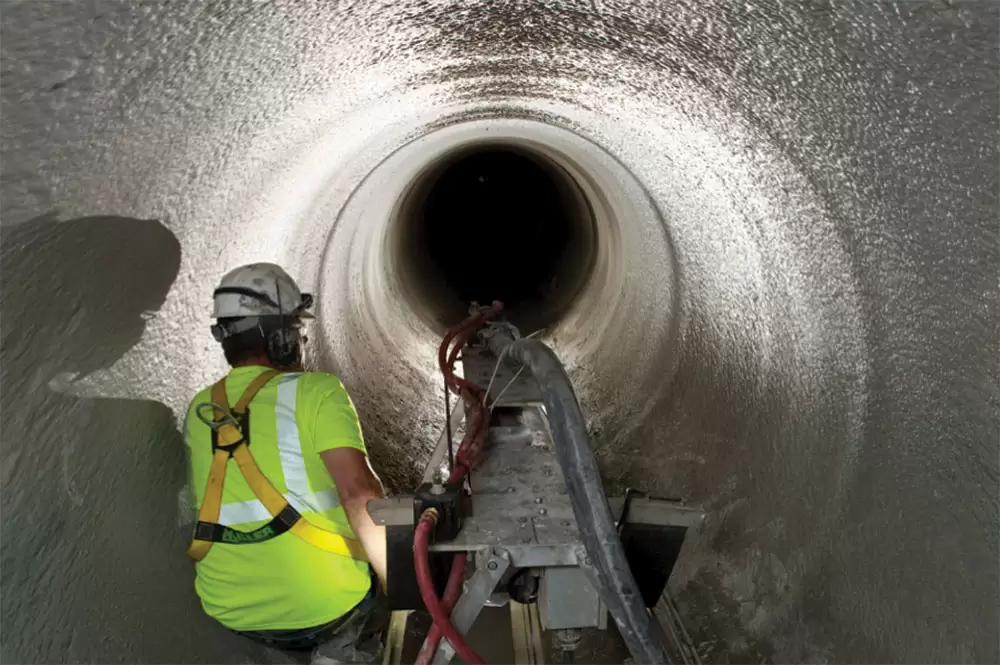
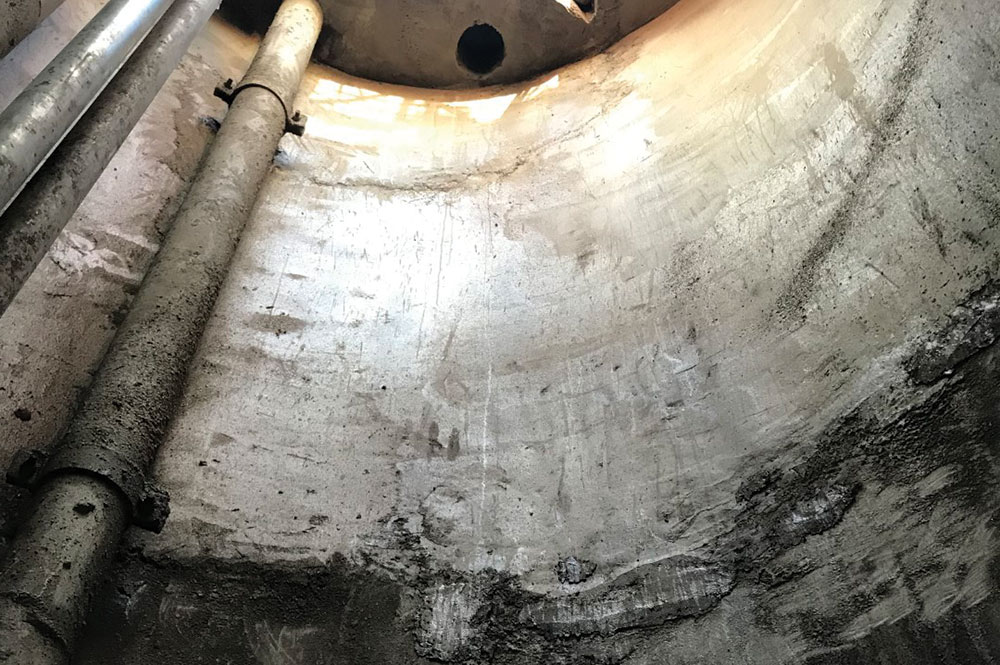
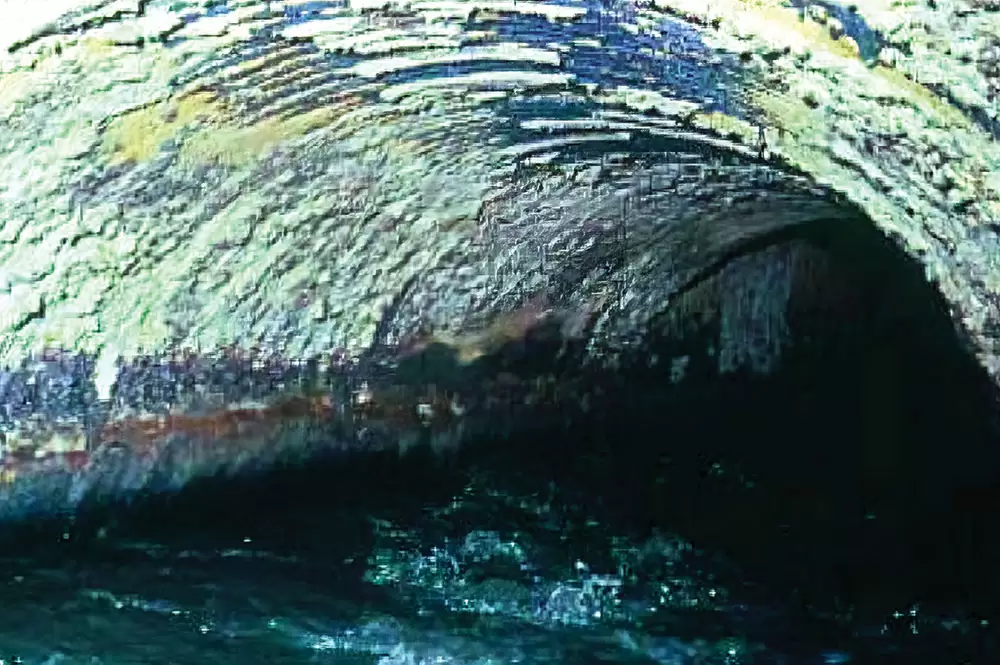


Beating bacteria
Bosco started Bluey in 2003 after seeing a gap in the market, as well as a gap between those developing new materials and the civil engineering sector that could be applying them, particularly in tunnelling and waterproofing.
The company began developing its product, called ZeoGlass, in parallel with a novel binder. The low-alkaline binder, Blucem, doesn’t use ordinary Portland cement, and they figured it could also incorporate recycled glass without any concrete cancer problems.
Blucem also includes calcium, which stops the metabolism of bacteria that dwells in sewers and turns organic matter into sulphuric acid, which corrodes infrastructure.
“There’s probably better access to glass, in terms of adding value to a recycled material, and there was something good that we could do for the environment as well,” Bosco recalled. “[But] I’ve always been a believer that whatever we do, it has to be economically sustainable as well.”

Bluey also had an incentive to use recycled glass that didn’t exist for major users of virgin sand. Where these vertically integrated operations — running quarries, transport, manufacturing — have access to their own sand at low costs, Bluey was paying $200 per tonne for the commodity.
The research and development team came up with five to 10 formulations of the product, tested the final version for a year, and then went to Sydney Water, which has almost finished two years of tests in digesters at the North Head Wastewater Treatment Plant.
Bosco said the tests correlate well with in-house research and suggest that the lifespan of assets can be increased 30 to 35 years.
There has been a small take-up of ZeoGlass so far, Bosco said, who expects large-scale use after trials.
“From what Sydney Water and the EPA have told us, if Sydney Water were able to convert all of their current refurbishment work that they’re doing to a product that contained recycled glass instead of sand, it would be enough to use all of the current stockpiles every year in New South Wales of recycled glass,” Bosco said.
XL Precast will first offer its product as precast concrete, then as pre-bagged materials, said founder Danys Bentancur. Its focus is concrete between 20 and 40 MPa compressive strength.
Bentancur said new processes always come with trade-offs, and he is already thinking about future research into using fewer chemicals and less energy-intensive methods to remove sugar, a contaminant left over from the contents of containers, from glass pre-crushing.
“If you really want to call yourself an environmentalist — and I do want to call myself an environmentalist — your target should be getting from A to Z truly sustainably,” he said.
Al-Ameri, whose background is in structural engineering, said the emphasis on sustainability in construction means it’s an exciting time for his field.
“This is, in fact, something like the missing ring in the chain here,” he said. “Because if we are focused on obtaining new and efficient structural materials for construction, that will definitely lead to better and more durable structures.”
He said his team’s work on polymer concrete flooring using a 20 per cent glass substitution for sand is near to commercialisation through Orca Civil Products, and the University of Pennsylvania has requested samples for its international database and testing.
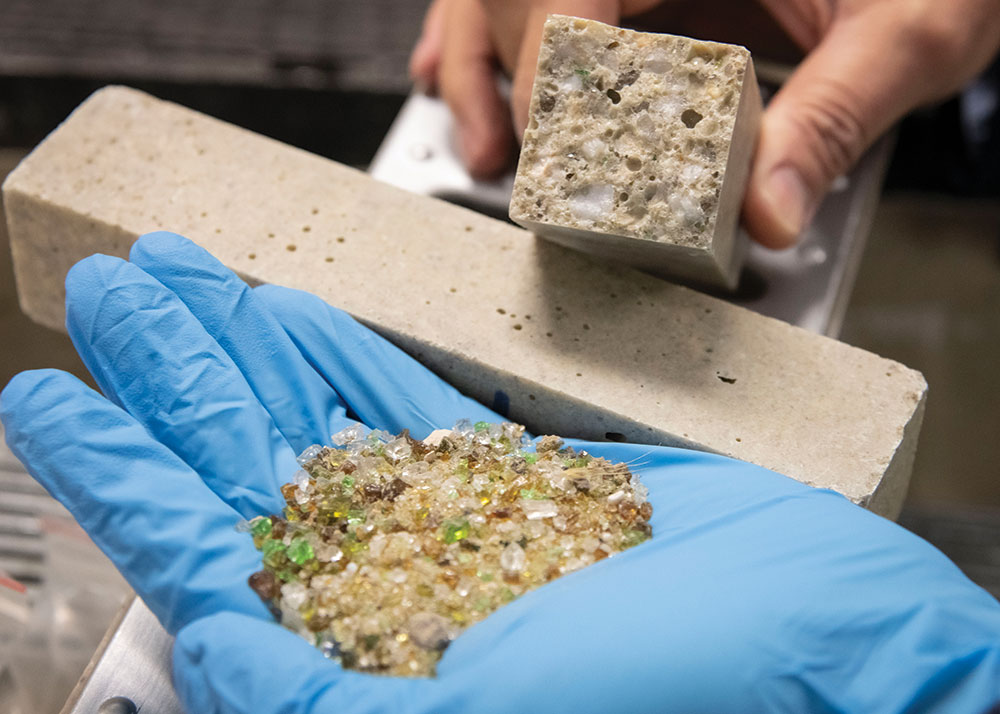
Now for something new
Bosco said civil engineering is — for understandable reasons — a highly conservative profession when it comes to new ideas as well as one with massive impact, so it needs to take recycling seriously.
“Our industry just isn’t thinking about it at all. I’d like to encourage all engineers to think about it and try to introduce some of these discussions into conferences, into the way we work,” he said.
“I think that the job of civil engineers is actually to solve problems for humanity. I think all the issues we’re seeing at the moment with overpopulation, virus outbreaks and famine and water shortages and traffic and whatever you point to there, there seems to be a way that civil engineers can help solve those problems through better projects and inventions.
“I’ve always had that strong feeling that we should be more involved, and I feel that engineers have lost a little bit of their creativity over time. And I think being creative is really important from an engineering point of view.”
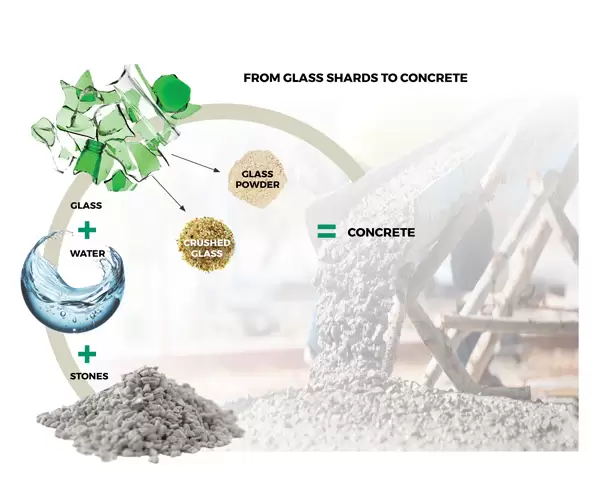
The right mix
Kashani and Kim from UNSW cannot talk in specifics about how they make glass fit for purpose, but confirm they are addressing particle sizes and using chemical additives.
“If you use glass appropriately and have some mitigation plans, then there’s a possibility that we can do it,” Kashani said.
James Cook University’s Tuladhar said his research has found a 40 per cent substitution of sand for glass with particles less than 4.5 mm was optimal, with a lower resulting alkali-silica reaction than concrete made with natural sand, as well as a beneficial “pozzolanic reaction”.
“This gives what we call calcium silicate hydrate. So when the cement reacts with water, we have the hydration reaction,” he added.
“It produces calcium hydroxide, and that calcium hydroxide reacts with any pozzolanic material — for example fly ash — that’s commonly used in concrete to give strength. When glass is crushed to size smaller than 4.5 mm, it starts to show pozzolanic properties as well.”




While recycling glass into concrete has merit, it does not completely solve the sand shortage issue.
Glass can be recycled into new glass multiple times, and its use for containers is actually far better than plastics, which I feel should be removed from the container industry.
Hi, happy to discuss use of glass in concrete as we’ve been doing it for a number of years pre-dating this research. Other sustainability options available for discussion via work done at UTS-Boral Centre for Sustainable Building, a partnership between UTS and Boral.
It is time to think outside the box. If there is going to be a suggested shortage of suitable sand, Should we not be looking at finding an alternative to concrete and dispense with the sand and cement mix.
There are already products available that are stronger than steel. Maybe there is a way to use them to create a substitute for concrete that would remove the dependency on sand and still have structural strength. It would also eliminate concrete cancer.
I’m have been watching wine bottles go into land fill for 3years now . I want to find a company who will buy the cullet from me is I produce it in 20litre drums.? Any takers ?
I agree we should be looking outside the box in this area. I can’t help wondering though if we will be solving one problem and creating another. We continue to tear down structures engineers of the past have built. And one day, people will tear down ours. In doing so, will there not be a glass waste problem? Will there also be fine glass dust caused by the destruction process that may be hazardous to people in the vicinity? I would like to think that as engineers, we will also consider these things in our design process. Some food for thought